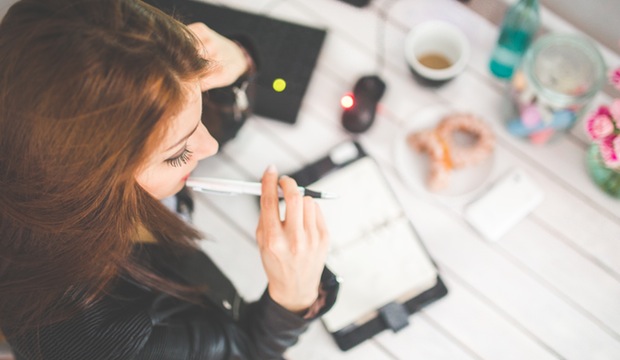
You just launched your women’s wear line, and are flipping through VOGUE looking for inspiration for next season’s shoot. You are really impressed by the editorial shoots you are coming across, and find yourself wondering: “How exactly do these photo shoots come together?” In addition to each spread being shot in a remote, exotic location, each shoot features chic sunglasses, fabulous shoes, statement jewelry pieces, maybe a matching hat or jacket — that clearly aren’t made by the main designer being featured.
So how does this variety of gorgeous fashion and accessories make their way into these perfectly styled editorial photo shoots?
Welcome to the world of photo styling, truly a world unto itself. This world within a world involves a complex web of negotiations between designers, showrooms, models, magazines and photographers.
All of these players contribute to the ultimate success of a photo shoot. Having access to pieces and accessories from other designers and boutiques can help complete a style, look, or mood you are going for. Traditionally, stylists and photographers hired for shoots can help designers access these items by “pulling” them from showrooms, other designers, and boutiques. But what if you are just starting out, and cant afford to hire a stylist or a photographer in the industry?
The good news is that you can also be the one requesting to “pull” items. The key thing is understanding how the “pulling” process works.
At the center of this type of exchange of goods is a simple document the fashion industry colloquially refers to as a “pull letter” (also known as a letter of responsibility or an editorial request). What? A legal document in the middle of it all? Law pops up in the most unlikely places (as you’ll start to see as you get further along in your fashion business)!
Put simply, if a showroom or a designer is going to lend out its goods to someone else to use, they are going to want someone to take responsibility for them and reimburse them in case the goods are damaged, lost, or stolen.
A “pull letter” is a legal agreement that allocates financial responsibility to one of the borrowing parties in case of damage, loss, or theft of the goods. Usually the letter will ask for the borrower’s credit card information so that in case something goes wrong, and the lender doesn’t get their goods back in exactly the same condition they sent them out in, the lender will have recourse against the borrower.
“Pull letters” also give an air of legitimacy to the project – it shows everyone means serious business and wants to play professional ball game.
So of all the parties involved in a shoot, who takes responsibility?
It depends. A magazine commissioning a shoot may be willing to take financial responsibility for the goods if the photographer, the designer, and the model are very well known. If you hire a stylist, responsibility for the “pull letter” and the underlying goods is something you should negotiate with them. Sometimes the photographer may get involved or take responsibility. It will all depend on the situation and the dynamics between you and your photo shoot team.
But for most emerging designers who are still building their brand, it is more likely they will have to take financial responsibility themselves. This isn’t necessarily a bad thing – just something to be aware of. It’s always important to know what you are signing up for, and where you have room to negotiate.
The key thing to remember is that a “pull letter” is a legal document that outlines the relationship between the owner and the borrower. The “pull letter” should contain the certain key items discussed below at a minimum, but like any legal agreement, its best to have it looked at it by an attorney since it is a legal document after all.
To get you started, here are a few things you would want any “pull letter” to spell out:
- The names of the parties involved (model, photographer, designer)
- A description of each of their roles
- Details of the photo shoot (time, place, etc.)
- Detailed itemized list of the goods being borrowed, including the retail price (everyone should know the value of what is being borrowed!)
- Explicitly state who is taking financially responsibility, including insurance coverage (if applicable)
- A request for credit when the photos are posted online
- State how long the items will be kept
“Pull letters” are an important part of fashion business collaborations. These types of arrangements will become more and more commonplace as your brand starts to grow and develop, and are an important part of relationship and brand building. Just remember, it’s better to be proactive and get in front of issues before they arise.
So treat a “pull letter” like you would any legal contract – if you’re being presented with one, then read it over, understand it, and ask your lawyer for help before you sign. If you’re presenting one, work with your lawyer to make sure you’ve covered all your bases.
Nima Katz is a corporate lawyer licensed in California and New York. She represents small businesses in a variety of commercial transactions and intellectual property matters. Visit her at www.nimakatzlaw.com or on Twitter @NimaKatzLaw.


Nicola
Hello,
Thank you for the great informative article on pull letters.
Do you have any templates and samples you can share please? Even a link to a few would greatly appreciated. I can’t find an example of one online.
I would need to create one for my shoots for my upcoming ecommerce site.
Thanks again and best regards,
Nicola
Nicole Giordano
Hi Nicola,
Unfortunately, since it’s a legal contract, we’re not able to share a sample. That’s why Nima listed the things you should include when creating one. 🙂